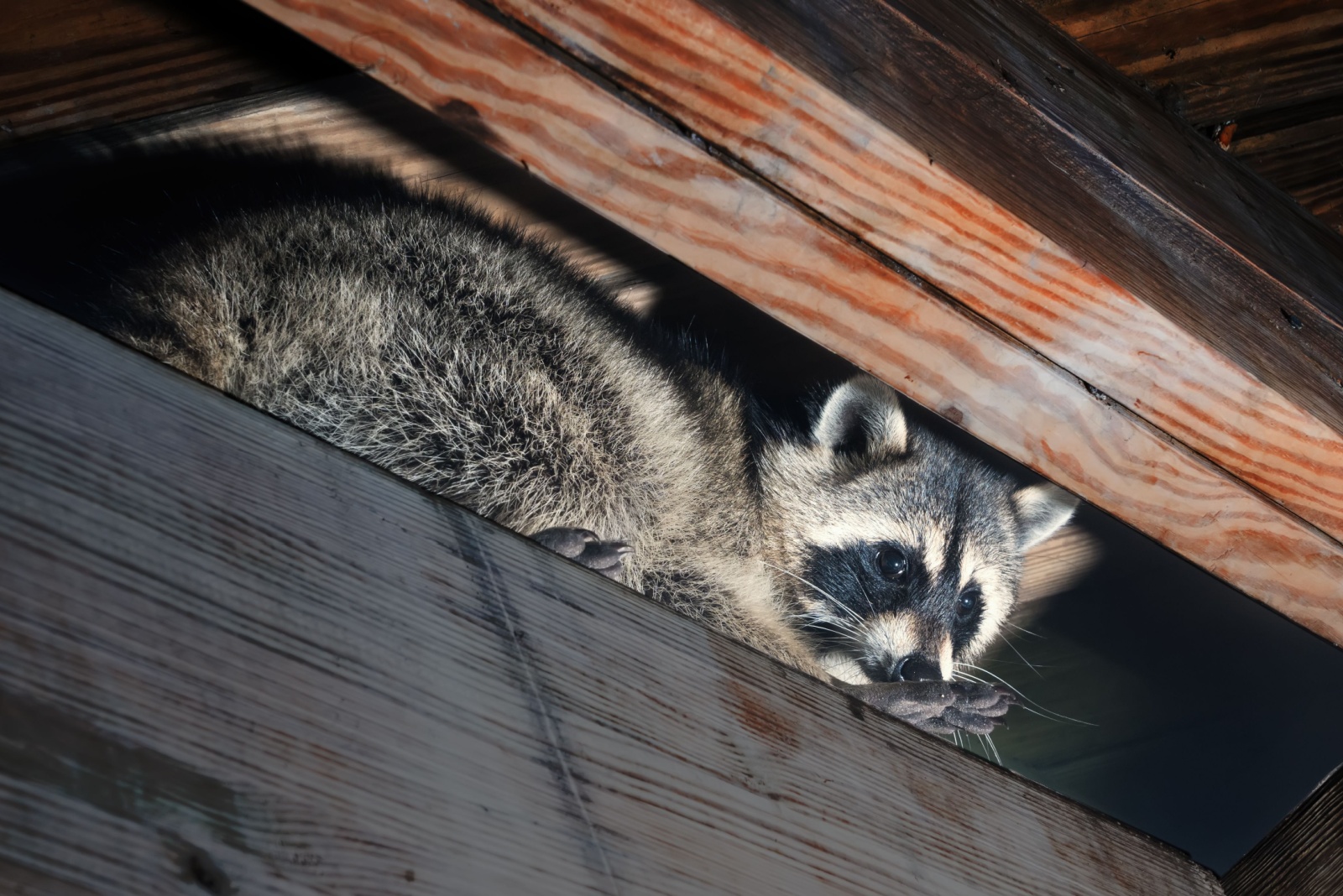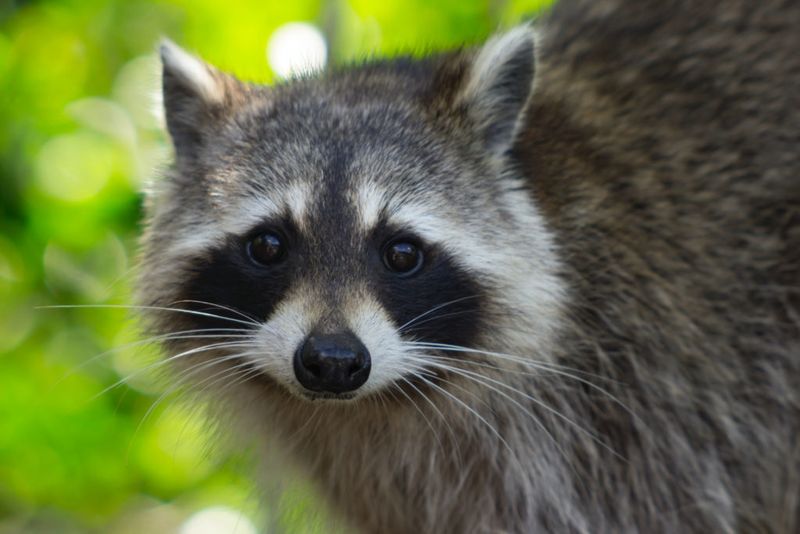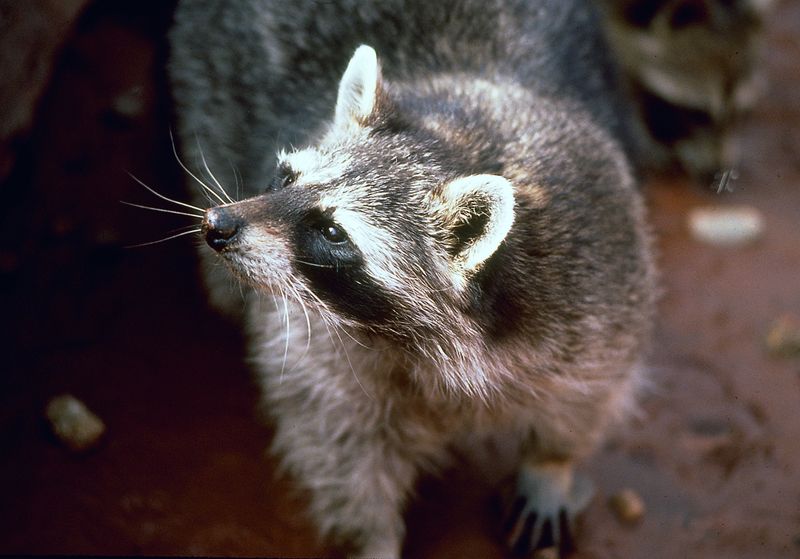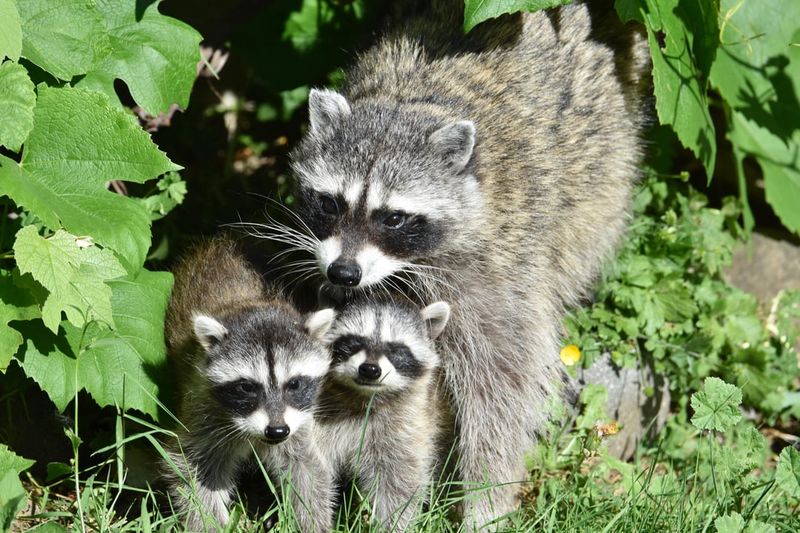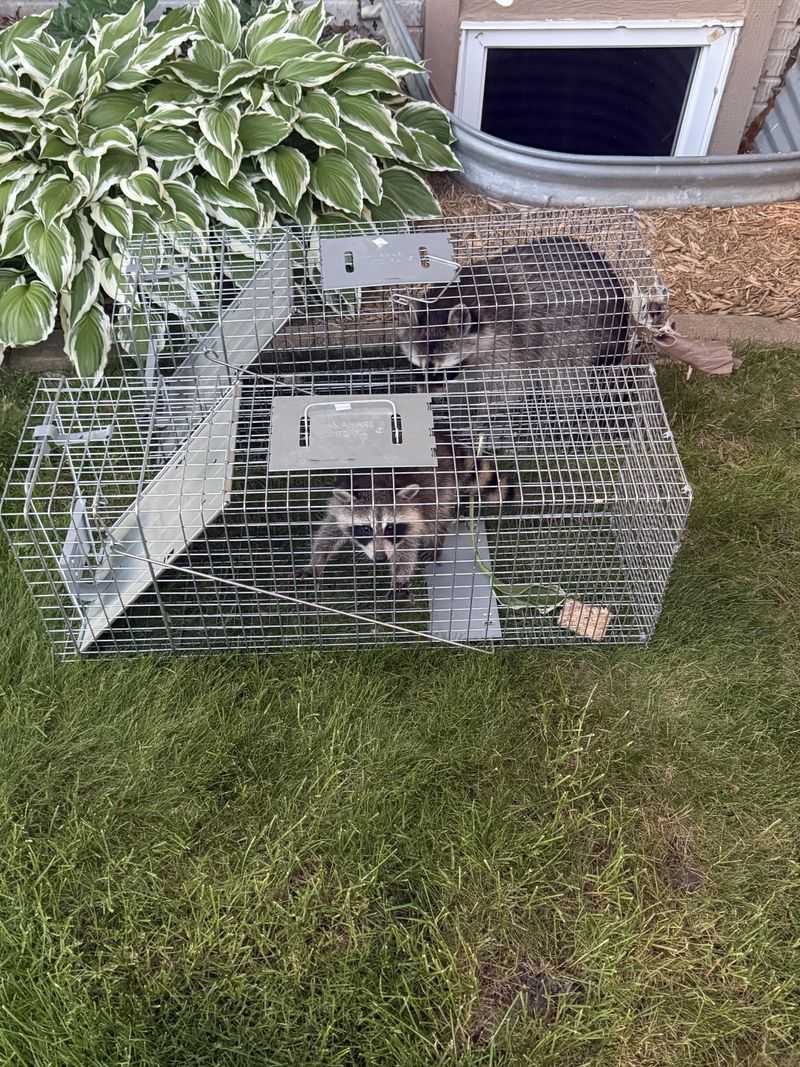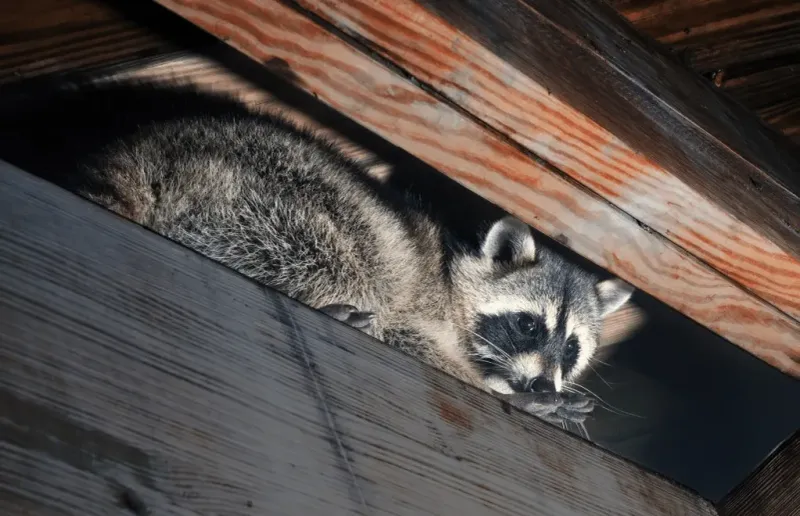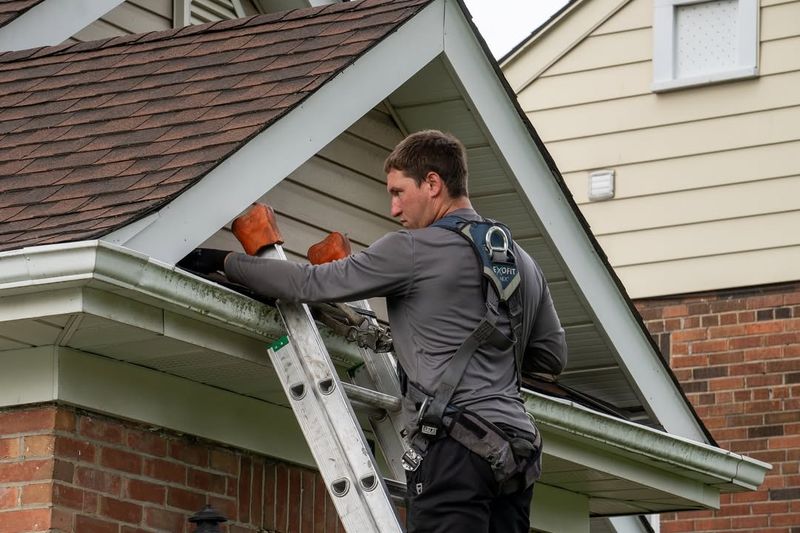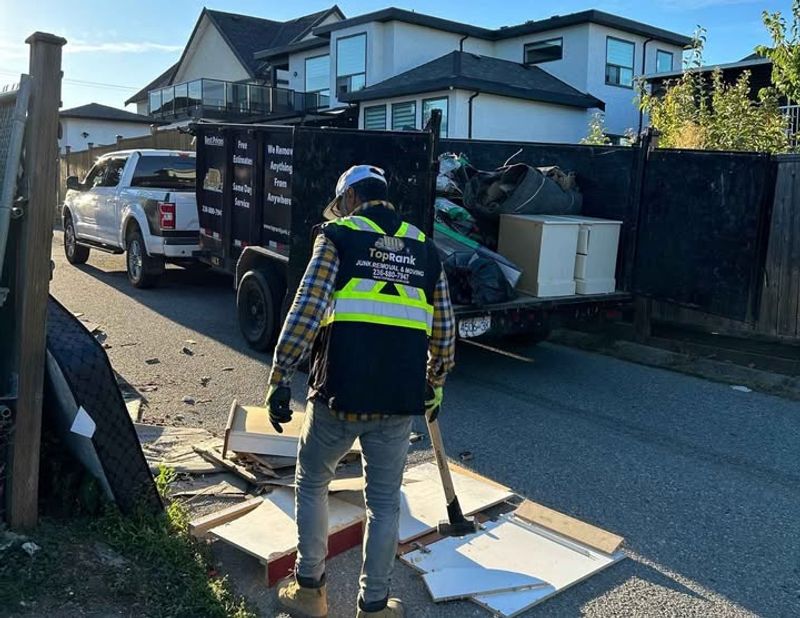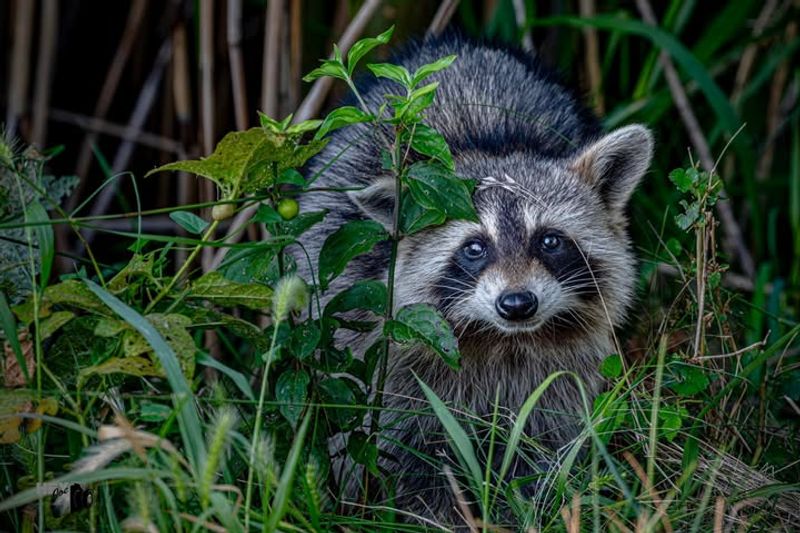Raccoons might look cute and harmless, but dealing with them on your property is a whole different story. Utah homeowners often find these masked bandits rummaging through trash, nesting in attics, or causing damage around their homes.
Before you grab a trap or try to shoo them away yourself, you need to understand what you’re up against and how to handle the situation safely and legally.
1. Raccoons Carry Dangerous Diseases
Rabies is one of the most serious threats raccoons pose to humans and pets. A single bite or scratch from an infected animal can transmit this deadly virus. Raccoons also carry roundworm parasites in their droppings, which can cause severe illness if accidentally inhaled or ingested.
Beyond these major concerns, raccoons spread leptospirosis and other bacterial infections. Never approach or handle a raccoon without proper protective equipment. Your family’s health should always come first when dealing with wildlife.
2. Utah Law Regulates Wildlife Removal
You can’t just trap and relocate raccoons anywhere you want in Utah. State regulations require specific permits for trapping, and relocating wildlife without permission is actually illegal. The Utah Division of Wildlife Resources has strict rules about how homeowners can handle nuisance animals.
Breaking these laws can result in hefty fines and legal trouble. Some removal methods are completely banned, even on your own property. Check with local wildlife authorities before taking any action to make sure you’re following the rules properly.
3. Mother Raccoons Protect Their Babies Aggressively
A normally timid raccoon becomes a fierce defender when babies are nearby. Mother raccoons will attack anyone they perceive as a threat to their young, using sharp claws and teeth without hesitation. Spring and early summer are peak breeding seasons when this protective behavior is most intense.
If you discover a nest in your attic or shed, keep your distance immediately. Attempting removal during nesting season significantly increases your risk of injury. Professional wildlife handlers have the experience and equipment to manage these dangerous situations safely.
4. DIY Trapping Often Goes Wrong
Setting traps seems simple until you actually try it. Raccoons are incredibly intelligent and often figure out how to steal bait without triggering the mechanism. You might catch the wrong animal entirely, like a neighborhood cat or skunk, creating an even bigger problem.
Even successful trapping leaves you with an angry, scared raccoon in a cage. Handling a trapped raccoon safely requires knowledge and proper gear. Many Utah homeowners get bitten or injured when trying to transport or release the animal themselves.
5. Raccoons Cause Expensive Property Damage
Once raccoons move into your Utah attic, they don’t just sleep there peacefully. They tear up insulation to build nests, chew through electrical wiring, and leave urine and feces everywhere. The smell alone can be overwhelming and difficult to eliminate completely.
Repairing this damage often costs thousands of dollars after the animals are gone. Contaminated insulation must be removed and replaced professionally. Water damage from torn roofing materials can lead to mold growth, adding even more expense to your repair bills.
6. Exclusion Works Better Than Removal
Preventing raccoons from entering your home beats trying to remove them after they’ve settled in. Seal all openings larger than three inches, including gaps around vents, chimneys, and roof edges. Install heavy-gauge wire mesh over vulnerable areas that raccoons might tear through.
Trim tree branches that hang within eight feet of your roof to eliminate easy access points. Secure trash cans with tight-fitting lids or store them in a garage. Making your Utah property less attractive and accessible discourages raccoons from choosing your home as their next den.
7. Professional Removal Saves Time and Stress
Wildlife removal experts handle raccoon problems daily and know exactly what works. They have the right equipment, legal permits, and insurance coverage that protects you from liability. Professionals can identify entry points you might miss and seal them properly to prevent future invasions.
While hiring an expert costs money upfront, it prevents costly mistakes and potential injuries. Licensed technicians also clean and decontaminate affected areas safely. You’ll sleep better knowing the job was done correctly and your family is protected from health hazards.
8. Timing Matters For Humane Removal
Removing raccoons during baby season can lead to tragic outcomes. If you seal entry points while babies are inside, they’ll die slowly from starvation, creating horrible odors and attracting other pests. Mother raccoons will also desperately try to break back in, causing even more damage.
Wait until fall when young raccoons are independent and mobile before sealing your Utah home. If you have an urgent situation during spring or summer, professionals can safely remove entire families together. Humane timing protects both the animals and your property from unnecessary suffering and damage.
9. One Raccoon Usually Means More
Raccoons rarely live alone, especially females who often den together with their offspring. Males might appear solitary but typically have overlapping territories with several other raccoons. If you’ve spotted one raccoon repeatedly, chances are good that others are nearby or already inside your home.
Food sources and shelter attract entire family groups to the same area. Your neighbors might be dealing with the same problem simultaneously. A comprehensive inspection of your entire property helps identify how many raccoons you’re actually dealing with before starting removal efforts.

